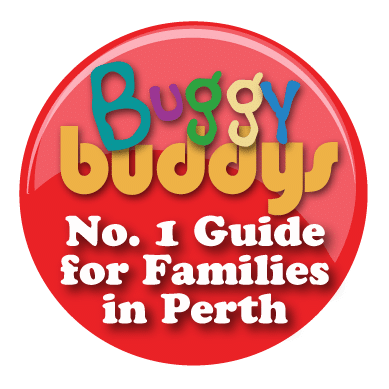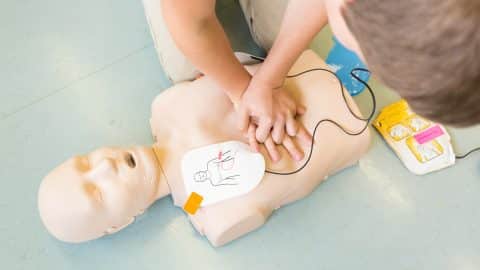It’s no secret that becoming a parent automatically comes with a certain amount of worry and concern for your child. This is understandable when considering the mischief some children can get up to. From climbing trees and chasing the neighbour’s cat down the street, to homemade billy carts and playground competitions, a scratch or two are most likely inevitable. While a few bumps and bruises may not be a major cause for concern, if your child were to be involved in a more serious accident or receive a wound that if not immediately tended to, could worsen, it’s important to know how to respond.
If your child already has a pre-existing condition such as asthma or allergies, it’s also wise to fully understand the appropriate steps to take if an emergency were to occur. The last thing any parent or guardian wishes to do is run their child to the hospital – feeling helpless and terrified. First aid training may be the answer to some of the aforementioned situations. While it’s not a pre-requisite for parents to learn, it’s highly recommended in order to keep your kids as safe as possible.
These skills may also be wise to obtain in case someone else’s child were to encounter a life-threatening situation. According to a 2016 Australian Child Health Poll, conducted by the Royal Children’s Hospital Melbourne, over 40% of Australian parents reported that they wouldn’t be confident in administering first aid to a drowning child. This is an alarming figure, especially when considering that between 2015 and 2017, 111 children’s lives were lost due to accidental drowning, as reported by the Australian Institute of Health and Welfare. First aid training could, therefore, save not only your child’s life but also other children’s. (1) (2)
If you’re not yet convinced that acquiring knowledge in first aid will make much of a difference in your child’s life, consider the following reasons as to why it’s beneficial:
The potential to save lives
You may hear “first aid” and immediately associate it with cardiopulmonary resuscitation (CPR). While the movies may make it look easy, acquiring the proper methods from trained professionals via a course is essential to making sure you’re prepared to perform CPR correctly. You can find courses in Perth and all over Australia, through organisations like Australia Wide First Aid.
There’s more to first aid than just CPR, however, and the right training should enable you to help with a range of issues.
These problems may include:
- Bites and stings
- Asthma
- Allergies and anaphylaxis
- Fractures and sprains
- (3)
The ability to properly administer CPR before the ambulance gets to the scene, or effectively bandage up an injury without having to wait for help, could make a big difference.
Wound and illness management
If your kid comes home with a scraped and bloodied knee, with the appropriate expertise you should be able to implement the correct strategies to aid in the healing process. If left unattended, the wound may worsen and become susceptible to infection. First aid training can teach you the correct bandaging, medicating and hygiene-related steps to take in preventing a minor injury from becoming a major problem. The same is to be said about an illness they may contract. Being able to identify the warning signs of something more serious is important.

Risk and hazard prevention
Have you ever glanced around your home and wondered if that bee hive outside should get removed or those hazelnuts on the floor should get swept into the bin before your baby gets home? These aren’t silly questions to ask yourself, they’re actually crucial in order to keep your child protected.
First aid training will assist you in identifying potential hazards and threats. Being able to scan a situation or landscape, pick out any problematic or dangerous areas and take action to improve its safety, is an invaluable skill to have – especially with younglings running around.
Optimising the safety of your home may include the following steps:
- Securing the pool gate.
- Keeping sharp tools/objects out of reach.
- Ensuring any electrical appliances are properly maintained.
- Placing stickers on glass windows and doors to avoid collision.
- Monitoring any and all cooking, especially if the stove or other potentially dangerous appliances are on. (5)
Final thoughts
Once you obtain even basic first aid training, you should have more peace of mind knowing that you can care for not only children but also adults. You may hope that you’ll never have to use the knowledge that you’ve absorbed, but having it, just in case, is indispensable, especially when attempting to keep your family safe from harm.
References
- “Summer safety: How ready are Australian parents to prevent and treats accidents and injuries?”, Source: https://www.rchpoll.org.au/wp-content/uploads/2016/12/Australian-Child-Health-Poll-5_Detailed-Report.pdf
- “Australia’s children”, Source: https://www.aihw.gov.au/reports/children-youth/australias-children/contents/health/injuries
- “The importance of first aid training for parents and carers”, Source: https://www.mybeach.com.au/news-events/importance-first-aid-training-for-parents-carers/
- “The importance of first aid training for parents and carers”, Source: https://www.mybeach.com.au/news-events/importance-first-aid-training-for-parents-carers/
- “Child safety at home”, Source: https://raisingchildren.net.au/toddlers/safety/home-pets/home-safety

















